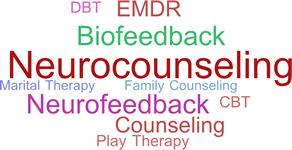NeuroCounseling: The Essence of What We Do
 In 2011, Allen Ivey and Carlos Zalaquett may have been the first to use the term “neurocounseling” to describe neuroscience-informed counseling. The term captures the essence of what many of us have been doing for decades: merging counseling with brain science and psychophysiological techniques to promote our clients’ wellness.
In 2011, Allen Ivey and Carlos Zalaquett may have been the first to use the term “neurocounseling” to describe neuroscience-informed counseling. The term captures the essence of what many of us have been doing for decades: merging counseling with brain science and psychophysiological techniques to promote our clients’ wellness.
As early as 1974, John Gottman (the influential marriage researcher) incorporated heart rate and breathing monitors in his therapy approach in order to ascertain a person’s stress reactions. Modifying these reactions can make or break a marriage.
While some writers use the term “neurocounseling” to merely describe an approach that employs counseling along with other neuroscience-based techniques at different times in the therapy, our approach is to integrate these various approaches in a therapy that may combine techniques together at once. For example, we may naturally use cognitive-behavioral techniques during a neurofeedback session to address issues as they arise. There are often thought patterns that give rise to some of the brainwave and physical reactions that occur. Likewise, our trained eyes are on the look out for physiological indications of increased stress or “flooding” during a counseling session–and employ body calming techniques. Its what we do.
